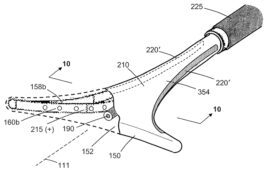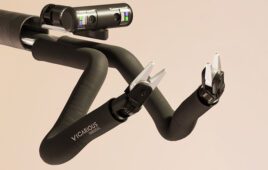When it comes to medical device intellectual property strategy, connected medical devices are changing the game.
David J. Dykeman, Greenberg Traurig
Eli Goldberg, Novartis Institutes for BioMedical Research

[Image from Unsplash
To maintain a competitive edge, connected medical device developers should build a strategic patent portfolio that focuses on protecting core technology, exploring new patent areas and establishing worldwide patent protection.
A growing market
Connected medical devices use wireless, or wired, resources to monitor patients in near real-time. Driven by the prevalence of chronic diseases including asthma, sleep disorders and diabetes, the global connected health device market is expected to reach an estimated $36 billion by 2023, according to MarketResearch.com.
For physicians and researchers, accurate and uninterrupted data collection is changing healthcare service delivery and creating new ways of understanding patients’ lives and behaviors. For patients, the ability to capture clinically relevant information outside of their doctor’s office provides actionable feedback to influence their behavior. Connected medical devices offer a wide range of powerful options for patients, physicians, researchers, and those simply interested in personal care.
The most common types of connected medical devices focus on point-of-care diagnostics and remote patient monitoring, such as continuous blood glucose monitoring and insulin pens, heart rate monitors, pulse oximeters, blood pressure monitors, breath analyzers, and even smart clothing. The next wave of connected medical devices includes connected inhalers, ingestible sensors, connected contact lenses, smart insulin pumps and connected hearing aids. There is also the rise of digital therapeutics (software to treat disease), where the app is the medicine. Novartis, for example, is collaborating with Pear Therapeutics to develop novel prescription digital therapeutics for patients with schizophrenia and multiple sclerosis.
Lead the way with a comprehensive patent strategy
A strategic patent portfolio protects a company’s core technology, which in turn helps secure funding and establishes a competitive advantage in the marketplace. A 2016 MIT study found that startup growth is 35 times higher for companies that apply for patents.
Patents are extremely important for connected medical device companies in all stages. For early-stage companies, patents are often the only way for investors to place a value on a company’s technology before FDA regulatory approval. In this way, patents make up a significantly greater portion of enterprise value for early-stage connected medical device companies. As a company grows, patents become the currency to secure financing through venture capital or private equity investment. They can also lead to business partnerships. For early-stage connected medical device companies (and young medtech companies in general), the key is to develop a strategic patent portfolio that has comprehensive patent coverage around the company’s innovations.
Build a picket fence of patent protection
A major challenge for connected medical device companies is the complex and often multifaceted nature of the technology. Connected medical devices often incorporate or combine technologies, and each component of the device must be protected. Where applicable, patent claims should be directed to the entire device, key components, mobile applications, control systems, disposables, software, methods of manufacturing, methods of treatment, and any other aspects of the invention. Design patents can also provide protection for the ornamental features of connected medical devices. As companies continue to improve their core technology, they should patent these incremental changes to form a “picket fence” of patent protection around all aspects of the core technology. By filing patent applications covering incremental improvements, connected medical device companies can expand their presence in the market and grow their patent portfolio.
Cross-licensing with competitors is another method to enhance a patent portfolio. Cross-licensing opportunities arise when two companies have overlapping patents, and practicing one patent results in infringement of another patent. With cross-licensing, companies can mutually agree to share patents without the exchange of license fees and with a promise not to sue.
Recent USPTO guidance may help ‘smart’ medical device patents
In January 2019, the U.S. Patent and Trademark Office (USPTO) issued new guidance that may help connected medical devices that incorporate “smart” technology to secure patent protection. Since the major 2014 U.S. Supreme Court decision in Alice v. CLS Bank, the USPTO has been more cautious in granting software-related patents. The Alice case focused on the threshold question of whether some software categories could be “eligible” for patenting, and the decision emphasized that wholly abstract ideas aren’t patentable. Because connected medical devices incorporate software and other computer elements, these innovations have been ill-affected by the Alice aftermath. The new USPTO guidance is expected to result in fewer software patent applications being rejected by the USPTO on patent eligibility grounds, which is welcome news for connected medical device developers.
Be aware of IP ownership in joint ventures
Traditional medical device manufacturers are partnering more frequently with digital health companies to develop connected medical devices. For companies entering into joint ventures, issues surrounding ownership of the connected medical device may emerge. For example, one company may claim ownership of the device, and a second company may claim ownership of the software code or app, thereby clouding ownership of the connected medical device itself. Therefore, companies entering into agreements with other companies to produce connected medical devices should establish at the outset of the relationship what rights each party will have related to the final product and what rights each party will retain upon termination of the agreement. Ownership disputes can be resolved by assigning patent rights entirely to one party or jointly between the parties. Alternatively, ownership disputes may be resolved by exclusive or non-exclusive licensing of the patent rights.
Have a strategic patent approach
The mobile and medical device industries continue to collide, bringing disruptive change to healthcare. Connected medical devices are the next wave in patient-centric healthcare. A well-planned, integrated patent strategy can address challenges unique to connected medical devices and ensure success in this fast-changing market.
David J. Dykeman is a registered patent attorney with more than 20 years of experience in patent and intellectual property law, and co-chair of Greenberg Traurig’s global Life Sciences & Medical Technology Group. David’s practice focuses on securing worldwide intellectual property protection and related business strategy for high tech clients, with particular experience in life sciences, medical devices, wearables, robotics and healthcare information technology.
Eli Goldberg is a digital endpoint analytics (IDEA) data scientist at the Novartis Institutes for BioMedical Research (NIBR). As a data scientist and serial entrepreneur, Eli has a proven track record of transforming new ideas into real world innovations in healthcare.
The opinions expressed in this blog post are the author’s only and do not necessarily reflect those of Medical Design and Outsourcing or its employees.





